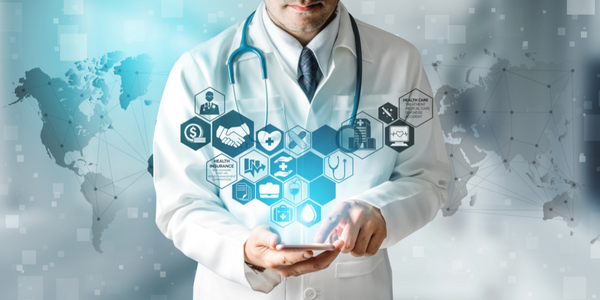公司规模
Large Corporate
地区
- America
国家
- United States
产品
- Dundas BI
技术栈
- HTML5
- SQL
实施规模
- Enterprise-wide Deployment
影响指标
- Productivity Improvements
- Digital Expertise
技术
- 应用基础设施与中间件 - 数据可视化
- 应用基础设施与中间件 - 数据交换与集成
适用行业
- 医疗保健和医院
适用功能
- 质量保证
- 商业运营
服务
- 数据科学服务
- 系统集成
关于客户
家庭医疗保健网络 (FHCN) 是一家非营利性社区组织,通过 16 家联邦认证的医疗中心为周边社区提供医疗保健服务。FHCN 是一个多站点初级医疗保健网络,为超过 200,000 名患者提供服务,是美国最大的医疗保健提供商之一。作为移民健康中心,FHCN 必须遵守美国卫生与公众服务部的统一数据系统 (UDS) 报告。该组织致力于通过提供优质的医疗保健服务、健康促进和疾病预防计划来改善其服务社区的健康和福祉。
挑战
家庭医疗保健网络 (FHCN) 面临着现有可视化功能和数据可访问性的挑战。他们希望提高整个网络的数据透明度,并提高美国卫生与公众服务部统一数据系统 (UDS) 报告中的组织范围绩效。UDS 是一组核心信息,适用于审查医疗中心的运营和绩效。收集的数据每年都会进行审查,以确保符合法律和监管要求,帮助报告一般医疗中心计划的成就,并不断改善医疗中心的运营和绩效。诸如 FHCN(移民医疗中心)等组织要求医疗中心计划受助者提交 UDS 报告。FHCN 需要一种能够提供更多可见性的 BI 解决方案,以帮助实现其数据的庞大性,并确保实现联邦目标。他们还需要一种能够为用户提供正确工具来提高绩效的解决方案。
解决方案
Family HealthCare Network 最初选择 Dundas BI 是因为其 HTML5 合规性功能。作为现有的 Dundas Dashboard 客户,FHCN 需要一款 BI 工具,使他们能够轻松扩展解决方案并覆盖组织内的所有用户。FHCN 能够以最小的努力将 Dundas BI 集成到其现有门户和数据源中。由于 Dundas BI 是一种基于服务器的技术,FHCN 部署解决方案非常简单,最终可以进行性能分析,而无需客户端安装。此外,通过基于浏览器的 BI 解决方案,FHCN 最终用户(包括 800 多名员工)能够随时访问数据。Dundas BI 为 FHCN 提供了拖放式可视化数据发现、自动连接和层次结构、集成和嵌入以及数据准备。
运营影响
数量效益

Case Study missing?
Start adding your own!
Register with your work email and create a new case study profile for your business.
相关案例.

Case Study
Hospital Inventory Management
The hospital supply chain team is responsible for ensuring that the right medical supplies are readily available to clinicians when and where needed, and to do so in the most efficient manner possible. However, many of the systems and processes in use at the cancer center for supply chain management were not best suited to support these goals. Barcoding technology, a commonly used method for inventory management of medical supplies, is labor intensive, time consuming, does not provide real-time visibility into inventory levels and can be prone to error. Consequently, the lack of accurate and real-time visibility into inventory levels across multiple supply rooms in multiple hospital facilities creates additional inefficiency in the system causing over-ordering, hoarding, and wasted supplies. Other sources of waste and cost were also identified as candidates for improvement. Existing systems and processes did not provide adequate security for high-cost inventory within the hospital, which was another driver of cost. A lack of visibility into expiration dates for supplies resulted in supplies being wasted due to past expiry dates. Storage of supplies was also a key consideration given the location of the cancer center’s facilities in a dense urban setting, where space is always at a premium. In order to address the challenges outlined above, the hospital sought a solution that would provide real-time inventory information with high levels of accuracy, reduce the level of manual effort required and enable data driven decision making to ensure that the right supplies were readily available to clinicians in the right location at the right time.

Case Study
Gas Pipeline Monitoring System for Hospitals
This system integrator focuses on providing centralized gas pipeline monitoring systems for hospitals. The service they provide makes it possible for hospitals to reduce both maintenance and labor costs. Since hospitals may not have an existing network suitable for this type of system, GPRS communication provides an easy and ready-to-use solution for remote, distributed monitoring systems System Requirements - GPRS communication - Seamless connection with SCADA software - Simple, front-end control capability - Expandable I/O channels - Combine AI, DI, and DO channels

Case Study
Driving Digital Transformations for Vitro Diagnostic Medical Devices
Diagnostic devices play a vital role in helping to improve healthcare delivery. In fact, an estimated 60 percent of the world’s medical decisions are made with support from in vitrodiagnostics (IVD) solutions, such as those provided by Roche Diagnostics, an industry leader. As the demand for medical diagnostic services grows rapidly in hospitals and clinics across China, so does the market for IVD solutions. In addition, the typically high cost of these diagnostic devices means that comprehensive post-sales services are needed. Wanteed to improve three portions of thr IVD:1. Remotely monitor and manage IVD devices as fixed assets.2. Optimizing device availability with predictive maintenance.3. Recommending the best IVD solution for a customer’s needs.

Case Study
HaemoCloud Global Blood Management System
1) Deliver a connected digital product system to protect and increase the differentiated value of Haemonetics blood and plasma solutions. 2) Improve patient outcomes by increasing the efficiency of blood supply flows. 3) Navigate and satisfy a complex web of global regulatory compliance requirements. 4) Reduce costly and labor-intensive maintenance procedures.

Case Study
Cloud-based healthcare solution for Royal Philips
Royal Philips wanted to launch its cloud-based healthcare solution HealthSuite Digital Platform in China to deliver services to help cope with challenges related to urbanization and population growth. Philips wanted to achieve this goal by combining mobile, cloud computing and big data technologies. To bring this platform and product to market, Philips required cloud computing and local technical service capabilities in China, in addition to a flexible IT infrastructure that could handle user requests.








